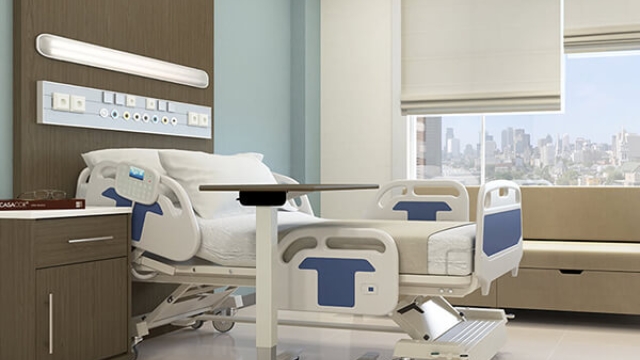The healthcare industry is continuously evolving, with innovations emerging in various fields to improve patient care and enhance the overall healthcare experience. One such area that often goes unnoticed, yet plays a significant role in healthcare spaces, is furniture. Healthcare furniture has evolved from being purely functional to becoming an essential component in creating a healing environment. In this article, we will delve into the world of healthcare furniture and explore how it is revolutionizing healthcare spaces, ushering in a future where comfort, aesthetics, and functionality seamlessly intertwine to enhance patient well-being and hospital efficiency.
Gone are the days when healthcare furniture was limited to uncomfortable, sterile-looking chairs and beds. Today, healthcare facilities are putting greater emphasis on patient comfort and relaxation, recognizing that a healing environment plays a pivotal role in the well-being and recovery of their patients. With the integration of thoughtful design elements, ergonomic features, and the use of high-quality materials, healthcare furniture has transformed into an integral part of the patient experience. From plush lounge chairs in waiting areas to adjustable beds that cater to individual patient needs, healthcare furniture has come a long way in providing comfort and functionality, ensuring that patients feel at ease during their healthcare journey.
Not only does healthcare furniture play a crucial role in patient comfort, but it also contributes to the overall efficiency and effectiveness of healthcare spaces. Furniture designed specifically for healthcare environments takes into consideration aspects such as infection control, easy maintenance, and adaptability to changing needs. From antimicrobial finishes that minimize the spread of germs to easily cleanable surfaces, healthcare furniture is now designed to meet the strict hygiene standards of healthcare facilities. Moreover, the modular nature of healthcare furniture allows for easy reconfiguration, enabling healthcare spaces to adapt to changing requirements and optimize the use of available resources.
As healthcare continues to evolve, so does the role of furniture in the industry. The future of healthcare furniture holds even greater potential for innovation, with the integration of technology and smart design concepts. From patient monitoring systems embedded within furniture to personalized seating arrangements that cater to individual needs, the possibilities are endless. With advancements in materials, such as the use of eco-friendly and sustainable options, healthcare furniture is also becoming more environmentally conscious, aligning with the industry’s growing focus on sustainability.
In conclusion, healthcare furniture is undergoing a remarkable transformation, revolutionizing healthcare spaces by prioritizing patient comfort, integrating functionality, and adhering to stringent industry standards. As the healthcare industry adopts a more patient-centric approach, the role of furniture in healing environments becomes increasingly significant. The future of healthcare furniture holds great promise, as innovative designs, materials, and technology converge to create spaces that enhance the well-being of patients and healthcare professionals alike.
1. The Importance of Functional Design
In the healthcare industry, the design of furniture plays a crucial role in ensuring the well-being of both patients and healthcare professionals. Healthcare furniture, specifically designed for medical environments, holds significant importance in revolutionizing healthcare spaces and enhancing the overall quality of care.
First and foremost, functional design is paramount. Healthcare furniture should provide comfort, support, and facilitate ease of movement for patients. Chairs and beds should be ergonomically designed to prevent any discomfort or additional strain for individuals with limited mobility. A well-designed healthcare environment can promote faster recovery times and improve patient experiences.
Furthermore, healthcare furniture must consider the specialized needs and requirements of healthcare professionals. Medical staff often spend long hours attending to patients, and their comfort and efficiency are crucial. Ergonomic chairs, height-adjustable workstations, and storage solutions that keep essential equipment within reach can significantly enhance the overall work experience, leading to improved productivity and reduced workplace injuries.
Moreover, the aesthetics of healthcare furniture should not be underestimated. Utilizing soothing colors, natural materials, and harmonious designs can create a welcoming and calming atmosphere for patients. Comfortable waiting areas with well-designed furniture can help reduce anxiety and stress levels, contributing to an overall positive healthcare experience.
In conclusion, the importance of functional design in healthcare furniture cannot be overstated. By prioritizing the comfort and well-being of patients while considering the needs of healthcare professionals, the future of healthcare spaces can be revolutionized, ultimately leading to enhanced care, improved outcomes, and a more positive overall healthcare experience for everyone involved.
2. Incorporating Technology for Enhanced Patient Experience
In the ever-evolving landscape of healthcare furniture, the incorporation of technology has paved the way for a truly transformative patient experience. By integrating cutting-edge technological advancements into the design and functionality of healthcare furniture, medical facilities are revolutionizing the way patients interact with their surroundings.
One of the key areas where technology is enhancing the patient experience is through the integration of smart features within healthcare furniture. Imagine a hospital bed that automatically adjusts its position based on the patient’s needs or a chair that monitors vital signs in real-time. These intelligent furniture pieces not only provide comfort and convenience but also enable healthcare professionals to collect crucial data for better patient care.
Furthermore, the utilization of interactive displays and touchscreens has become increasingly prevalent in healthcare furniture design. These devices allow patients to access information, entertainment, and even communicate with their healthcare providers effortlessly. From adjustable bedside tables with built-in touchscreens to chairs equipped with interactive displays, these innovative solutions are empowering patients and transforming their hospital stay into a more engaging and personalized experience.
Beyond patient comfort and engagement, technology-enabled furniture plays a vital role in ensuring patient safety and well-being. For instance, the integration of pressure-sensitive materials in seating solutions helps prevent the development of pressure ulcers. Additionally, the use of antimicrobial surfaces on various furniture components minimizes the risk of infection, contributing to a healthier environment for both patients and healthcare providers.
In conclusion, the incorporation of technology within healthcare furniture is revolutionizing the patient experience. By embracing smart features, interactive displays, and prioritizing safety, medical facilities are creating a more personalized, engaging, and efficient healthcare environment. As the future unfolds, we can expect further advancements that will continue to shape the way healthcare spaces are designed and experienced.
3. Ergonomics and Comfort in Healthcare Settings
Ergonomics and comfort play a vital role in healthcare settings. When considering healthcare furniture, it is crucial to understand the impact it can have on both patients and healthcare professionals.
Firstly, ensuring ergonomic design in healthcare furniture is essential for the well-being of patients. Comfortable seating options, such as adjustable chairs and sofas with ample support, can contribute to improved patient satisfaction and overall experience. By providing furniture that is specifically designed for healthcare settings, patients can rest and recover in a comfortable environment, promoting a sense of ease and relaxation during their stay.
Hospital Furniture Manufacturers
Secondly, healthcare professionals also benefit from ergonomic furniture in their workspaces. Medical staff often spend long hours attending to patients, and having ergonomic seating and workstations can help reduce physical strain and fatigue. Adjustable desks and chairs that provide proper back support and adjustability can contribute to the overall well-being of healthcare professionals, allowing them to focus on providing quality care to their patients.
Lastly, incorporating elements of comfort in healthcare furniture is crucial for creating a welcoming and calming atmosphere. Soft fabrics, gentle colors, and aesthetically pleasing designs can help create a soothing environment that promotes healing and relaxation. By prioritizing comfort in healthcare furniture choices, healthcare facilities can contribute to a positive and comforting experience for both patients and caregivers.
In conclusion, ergonomics and comfort are crucial aspects to consider when revolutionizing healthcare spaces through furniture. By prioritizing the well-being and comfort of patients and healthcare professionals, healthcare facilities can create environments that promote healing and enhance the overall healthcare experience.










